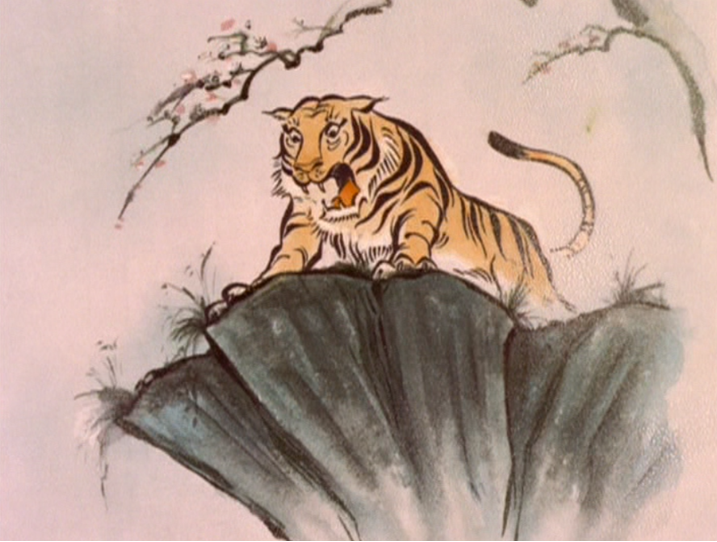Competing with the Negative Story About Whites, Part 1
An attack against whites is raging full bore these days (it’s July of 2020). Hoards are roaming about desecrating and toppling statues of white heroes. Every center-stage talking head and computer key tapper and every school teacher and administrator from grade school to graduate school is steadily piling on—racism, racism, racism, racism, racism, racism, racism, racism, racism, racism, racism, racism . . . and racism. Seriously, I’m wondering whether Goebbels with the Jews and the Turks with the Armenians had worse things to say about their prey than what I’m hearing about my people—who, by the way, as far back as I can trace, worked a small peanut farm, went deaf tending a roaring-loud machine in a factory, stood arms and hands in the air with shoulders throbbing cutting people’s hair, rang up a cash register all day at Schuneman’s Department Store in downtown Saint Paul, Minnesota, came up with the money (just barely) to pay the rent for the second-floor rooms in Mr. Jensen’s house we were living in, bought me corduroy pants to wear to Davis Grade School, and oppressed absolutely nobody on the face of this earth.
I’m not up on history enough to know to what extent, if any, the Jews and Armenians bought the horror story being told about them, but it’s scary how many white people these days, particularly the young, are, in self-flagellating fervor, beating their heads against cement walls. I go all the way back to Adlai Stevenson, who ran as the Democrat candidate for president in 1952. Dignified, urbane, quick-witted. I’m comparing him to the current presumptive Democratic nominee—a shaky, nursing home apparition—putting down an entire race of people and offering slurred promises, scout’s honor, not to select one of them to be on his ticket as vice-president. It takes my breath away.
The Black Lives Matter thugs, Antifa marauders, and establishment bad-mouthers didn’t spring up from nowhere. What we are so painfully experiencing is a continuation, and escalation, of what’s been going on for decades. In 2009, eleven years ago—and it could have been written years before that—with a focus on elementary and secondary schooling, I wrote this (I’ve added some present-day parenthetical inserts):1
We need to put forth a positive narrative of the white race to counter the negative one being imposed on our children. The late scholar Neil Postman wrote that a narrative
tells of origins and envisions a future; it is a story that constructs ideals, prescribes rules of conduct, provides a source of authority, and, above all, gives a sense of continuity and purpose.2
The narrative, the story, of whites being preached to our children these years is one in which the themes are not the truly remarkable accomplishments of whites but rather repression and injustice: racism, sexism, economic and political exploitation, arrogance, and exclusion. The late critic and novelist Susan Sontag, honored far and wide and a regular on the commencement speech circuit, proclaimed, “The white race is the cancer of human history.” Especially villainous in the story are white men, or, in the parlance of the day, white males—insensitive, boorish, authoritarian, violent.
The challenge facing humankind, the current narrative has it, is to put whites in their proper place, which, depending on the version of story being told, is either on a par and mixed in with everybody else or chastened and deferential at the back of the line. Absurdly, whites are being charged with bringing themselves down; and even more absurdly, many are taking on the task. Is there any other group of people—blacks, Jews, anybody—you could con into self-abnegation and turning on their kinsmen?
White young people are taught the contradictory beliefs that 1) race doesn’t exist—it is a social fiction, 2) race does exist but doesn’t matter, and 3) race exists and matters, and for them their race is something to feel guilty about and atone. Decades of teaching college students and I never heard one of them point out the irrationality of that package of assertions. Though I don’t want to conclude that it got by all of them; white students know to keep their mouths shut, even with someone like me who has the appearance at least of being on their side. In any case, they got the basic idea, and I believe great numbers took it to heart: they have no business feeling one iota of positive connection with their race, their European heritage, or one another.
What’s going on in our schools is nothing less than a subtle genocidal attack against a race of people. The first step in this pogrom is to get white children and only them—no one else is taught this—to reject, even disdain, their racial identity.
Prominent educator Herbert Kohl reflects widely held views in the field of education when he writes about a university class he instructed in which he sought to “level the playing field” by teaching white students that their culture is “no more permanent or special that other cultures.”3
Kohl says he discouraged whites from seeing themselves as separate and distinct or feeling pride in being white. His lessons—coming after years of similar ones in many other classrooms and in countless movie theaters and on countless television screens—bore fruit: he reports with obvious satisfaction that his white students said they “hated being called white” and were “annoyed” and “angry” that they are white. Kohl is Jewish; would he have been as proud of getting Jewish students to say they were annoyed and angry that they are Jewish?
White students need to hear another story, another narrative, about their race. They need to hear of their adventurous and visionary and daring and spiritual ancestors—farmers, warriors, philosophers, poets, scientists, architects, civilization builders. To be sure, white history isn’t an unblemished record, but the main thrust of the white race isn’t the tale of oppression being imposed on us.
Last weekend, I was sitting with a friend at the lake front in Burlington, Vermont. There were hundreds of people around where we were— parents and children, young couples, older people. There was a gentility, a peaceful flow, a grace, to the people and the setting. It was safe where we were. I remarked to my friend how impressed I was with the architecture in the lake front area and in the downtown stores and offices just behind us, and how everything was kept up so well. After a time of silence, she said, “You know what I’m thinking? Everybody here is white. This is what they built, this is what they created; this is how they live when they are among their own.”
Young white people—all white people—have a right to acknowledge the worth as their race, and to be proud of it, and to feel connected to it, and to feel responsible for continuing and extending its best aspects. A white narrative needs to include the reality that this way of life is threatened. There are fewer and fewer Burlingtons now days (and how long will Burlington be Burlington?) and more and more Detroits and Londons and Cincinnatis. My hometown of Minneapolis, a lovely, safe city of lakes when I was growing up, has gone through drastic demographic changes and, predictably, much of it isn’t lovely and safe any longer. It has come to be called—I find this so sad—“Murderapolis.” [Unemployed, ex-con, drug-using, bad-check-passing, arrest-resisting, and future-mural-idol George Floyd graced the city with his presence after leaving his young daughter and her mother in Houston.] It goes unreported, but white people everywhere are under siege and fleeing—it’s disdainfully called “white flight” by people who live in gated communities.
My book One Sheaf, One Vine is made up of the personal statements about race from seventeen everyday white Americans, who if it hadn’t been for my book would be publicly silent [just as, to a remarkable degree, everyday white Americans have been publicly silent throughout this recent post-Floyd rampage].4 Those who control the public discourse don’t want us to hear from them, and anyone, like me, who makes them visible is subject to attack. Hear from two of the white people who speak out in my book:
The first is a forty-year-old man from the northeastern part of the United States.
People who think of themselves as enlightened and on the moral high ground in matters of race write off people like me as ignorant racists. Unlike them, so it goes, we pre-judge people. If only we were exposed to racial and ethnic diversity we would learn to value different kinds of people—etcetera, etcetera, you’ve heard the line. You’ll notice that most of these people doing the pontificating and finger pointing about racial equality and harmony and the virtues of integration and multi-racialism do it from the far distance of the leafy suburbs or a university campus somewhere. The fact of the matter is that, unlike practically all of them, I have lived up close with the reality of race in America. And regardless of what they might like to think, I am not stupid or unenlightened or their moral inferior. Those who look down their noses at people like me should come live for a year or two or three where my family and millions of other white families live. Let their children grow up and go to school in this pigsty and be threatened and attacked and robbed and raped. Then they can talk.
The second is a twenty-eight-year-old woman who is leaving southern California for Washington State or Oregon, or perhaps Canada, she’s not sure, in the face of the non-white infusion of the area in which she lives:
I just want to live a normal life, preferably with a family, but if I can’t have that, a life with good friends in a community where I feel safe and I’m free to walk down the street without looking over my shoulder. I want to be able to express pride in my people and admiration for our white ancestors and continue their traditions without minority harassment and interference. When I am really old, I want to live in peace instead of like the old people in the neighborhood where I live who are eighty-ninety years old without the energy or the money to escape.
This is going on, and our children are hearing their race and heritage denigrated in schools, and they are being deluged with crude and vulgar messages and images from the lowest rung of black culture, and they are the victims of racial discrimination when they apply for college or a job, and demographically their race is steadily disappearing from the face of the earth.
I received an e-mail yesterday from a father who told me that his daughter, who had worked incredibly hard in school and had graduated at the top of her high school class, had been rejected by all the Ivy League schools she had applied to while many of her black classmates with far lower academic achievements and test scores had been admitted. He said his daughter “cried and cried.”
After reading what this father wrote, I cried and cried. A new narrative should include this white girl, along the invitation to white people to expel their sense of isolation, their feeling of separation from one another, their atomization, and join with their racial kinsmen to put a stop to this injustice and cruelty. Doing that isn’t about being against anyone or hurting anyone. Rather, it is about racial self-love and self-preservation and self-determination, which are the rights of every race of people.
* * *
The campaign against whites sets up a demonic category—white—and puts every last white person in it, whether they be from Silicon Valley or rural West Virginia, are a janitor or corporate head, old or young, liberal or conservative, or from the distant past or alive now. They are all the same, and they are all bad, bad, bad.
What does that accomplish?
It replaces reality with a narrative. What white people actually did, or do, or are—the incredible complexity of that—becomes a simple, and negative, story. Now, the basis of truth isn’t facts or logical inference; it is the story. All you need to keep the story going is a single instance that seems to affirm it. A police-related death in Minneapolis—ah yes, the story is true.
It makes the grievances of blacks, thirteen percent of America’s population, the national agenda. It makes a group of people all-important who on their merits deserve little or no attention until they get their acts together. It gives people unearned respect. It relieves blacks of personal responsibility, a basic tenant of this culture and society,
And frighteningly, ominously, as it did with the Jews and the Albanians, it sets whites up for being debased, abused, taken down, robbed, assaulted, and killed. Narratives are deadly serious business.
* * *
Part of exploiting, injuring, and displacing people is to keep them from thinking about what you don’t want them thinking about. Stories keep concerns, questions, issues, and possibilities out of peoples’ minds. To illustrate, here are a couple of white people who at one time were prominent in American life who have been excised from the past—David Starr Jordan and Lyrl Clark Van Hyning. Those currently in power don’t want us to know about Dr. Jordan and Ms. Van Hyning because if we did, we might be prompted to think about things they don’t want us getting into. As you read through these accounts of the lives of these two people, think about what that might be.
* * *
David Starr Jordan (1851–1931) was a distinguished naturalist and social philosopher, published poet, and the first president of Stanford University. He was described by his biographer as “one of the most versatile men America has produced, winning distinction not only as an educator, philosopher, and scientist but also as an explorer, crusader for peace, advisor to presidents, and statesman.”5
Jordan was openly and proudly racially conscious. He used the term “Aryan” and asserted that the “whole body of the ‘blond race'” constituted a brotherhood. He held that race was “the blood of a nation” and the primary determinant in its history.
Jordan’s believed white racial superiority to be the observation of every intelligent person. Jordan asserted that northern European peoples have the highest level of the qualities needed to produce a superior society and culture. Very important to Jordan, Nordics didn’t have what was most detrimental to civilization building: a high percentage of dissolute and disorganized. He cautioned that even the most favorable surroundings “can never change a bad breed into a good one.”
Jordan saw America as a Nordic nation: “Its freedom was won and its integrity maintained by Nordic methods,” he wrote. “Who gave them this chance?” he asked. “Did they not take it for themselves? They have had liberty, education, and self-government because they wanted these things and wanted them badly enough to put forth the effort to get them.”
Jordan despaired of the introduction of Africans into the country and the prospect of racial intermixing. He decried the immigration of “weaker groups” being fostered during his time by industrialists in search of cheap labor.
He prophesized that unless Jewish power in the world was held in check the result would be “nothing less than Armageddon.”
Jordan opposed war as an instrument of public policy. He pointed out that in the American Civil War half of the best young men in the South were killed or died of disease, and that forty percent of them did not leave descendants. Jordan noted that wars breed hatred, resentment, grievance, and the desire for revenge, which lead to future wars and even more slaughter and devastation. He repudiated the contention you must fight fire with fire. “Fire will not put out fire,” he warned.
Along with many prominent people of his time—among them, John Harvey Kellogg of breakfast cereal fame, naturalist Luther Burbank, and Harvard president, Charles Eliot—Jordan was a eugenicist. “A race of men or a herd of cattle are governed by the same laws of selection,” he wrote. He condemned social policies impelled by paternalism and charity that result in racial deterioration by encouraging “weakness to mate with weakness.”
* * *
Lyrl Clark Van Hyning (1892–1973) was a leader of a women’s movement in the late 1930s and early ’40s that centered its efforts on opposing America’s involvement in the war in Europe.6 At its peak, the confederation of women’s groups that conducted this campaign had six million members. Although Van Hyning saw herself as a champion of women, she stood in stark contrast to today’s feminists. Her politics were right-of-center. She was highly nationalistic, patriotic, anti-communist, and critical of Jewish influence, and pro-free-enterprise. Her orientation was, in the first instance, maternal: she saw herself as a mother and approached things from that perspective. Only mothers, she believed, could save their sons from the war that was impending and then waged. She upheld the traditional family, which included a strong and vital patriarchal presence. She didn’t set herself off against men: her husband and son and other men, weren’t “them” to her but rather “us.” She didn’t portray men as competitors or adversaries, or see them as needing to be held in check or reconditioned. Last, she was a strong Christian. A few weeks before the invasion of Europe that everyone knew was coming soon, she declared: “Those boys who will be forced to throw their young flesh against the impregnable wall of steel are the same babies mothers cherished and comforted and brought to manhood. Mother’s kiss healed all hurts of childhood. But on invasion day no kiss can heal the terrible hurts and mother won’t be there. Mothers have betrayed their sons to the butchers.”
* * *
What might these two lives bring up among white people, particularly young whites, that those in power want to suppress?
- The possibility of white racial consciousness and commitment. That’s for other people—in fact, all other people—but not for whites.
- The possibility that, in fact, there are qualitative differences among the races. What if instead of looking down our noses and blotting out figures like Thomas Jefferson, Teddy Roosevelt, Woodrow Wilson as ignorant racists, case closed, we said, “We would do well to look into why people as capable and accomplished as these men thought about race as they did.”
- That America was founded as a Nordic nation and would have been better off staying that way. And that now, Nordic people should have the right to live their way among their own.
- That everybody concerned about Jewish impact isn’t a lunatic bent on exterminating them. That there is the possibility of considering this issue rationally, dispassionately, and objectively.
- That woman’s issues are not the sole province of the political left and its perspective. There was a women’s movement—with six million members!—that demonstrated that.
- That war isn’t simply a necessary evil, including the beloved World War II, which resulted in 50 million deaths in Europe alone. Those in power back then loved it when Iowa farm boys set down their plows and sailed across the ocean to anonymously kill European boys who looked just like them. And they loved it that the boys’ mothers went along with it. As a very small child in the early ‘40s, I remember seeing small stars on pieces of cloth tacked on to front doors of houses. I have since learned that a blue star represented a family member in the military and a gold star a family member who had been killed in the war. The Sullivan family made the news for having five gold stars for the five Sullivan brothers who lost their lives in the war. I don’t know how the mother of the Sullivan boys thought about the war, but Lyrl Clark Van Hyning, the mother of a boy, wasn’t having any part of that government program of destruction and slaughter. The thought of Lyrl Clark Van Hyning’s example crossing the minds of mothers sends shivers down the spine of those who want a ready supply of young bodies for the next killing spree in the Middle East.
What can be done to compete with the prevailing negative narrative about white people? In Part 2, I’ll offer some thoughts in response to that question.
Go to Part 2 of 2.


















